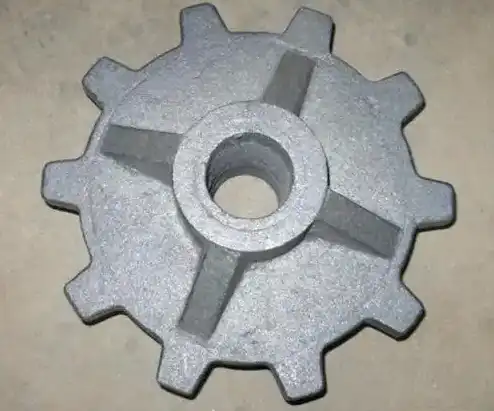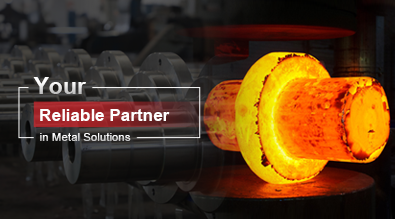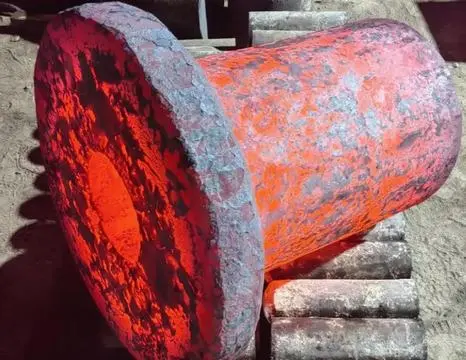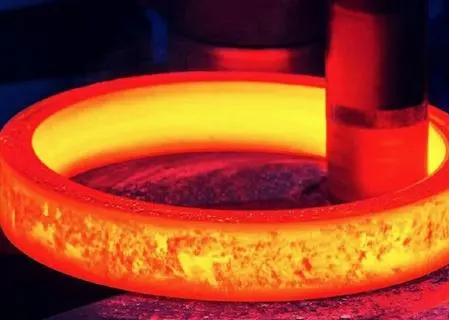Why Are Rare Earth Elements Vital for Spheroidal Graphite Cast Iron’s Fracture Toughness?
Spheroidal graphite cast iron, also known as ductile iron, has become increasingly important in various industries due to its exceptional mechanical properties. One of the key factors contributing to its superior performance is the addition of rare earth elements, which play a crucial role in enhancing the material's fracture toughness. This blog post will explore the significance of rare earth elements in improving the fracture toughness of spheroidal graphite cast iron and delve into the mechanisms behind this enhancement.

How Does the Microstructure of Spheroidal Graphite Cast Iron Affect Its Properties?
The Role of Graphite Nodules in Spheroidal Graphite Cast Iron
Spheroidal graphite cast iron derives its unique properties from the presence of spherical graphite nodules embedded in a metallic matrix. These nodules act as stress concentrators and crack arresters, significantly influencing the material's mechanical behavior. The shape, size, and distribution of these nodules play a crucial role in determining the overall performance of the material. In spheroidal graphite cast iron, the graphite nodules are formed during solidification and are typically spherical in shape, which contributes to the material's high strength and ductility. The presence of these nodules allows for better stress distribution throughout the material, reducing the likelihood of crack initiation and propagation.
The Influence of Matrix Structure on Mechanical Properties
The matrix structure surrounding the graphite nodules in spheroidal graphite cast iron significantly impacts its mechanical properties. The matrix can vary from ferritic to pearlitic or a combination of both, depending on the composition and heat treatment of the material. A ferritic matrix provides excellent ductility and toughness, while a pearlitic matrix offers higher strength and wear resistance. The balance between these phases can be tailored to achieve the desired mechanical properties for specific applications. The matrix structure also affects the interaction between the graphite nodules and the surrounding material, influencing crack propagation and overall fracture toughness.
The Impact of Nodule Count and Distribution on Fracture Toughness
The number of graphite nodules per unit area (nodule count) and their distribution within the matrix are critical factors affecting the fracture toughness of spheroidal graphite cast iron. A higher nodule count generally leads to improved mechanical properties, as it provides more obstacles to crack propagation. Additionally, a uniform distribution of nodules ensures consistent properties throughout the material. The size of the nodules also plays a role, with smaller nodules typically resulting in better mechanical properties. Achieving an optimal balance between nodule count, size, and distribution is essential for maximizing the fracture toughness of spheroidal graphite cast iron and ensuring its reliability in various applications.
What Is the Mechanism Behind Rare Earth Elements' Influence on Graphite Morphology?
The Nucleation Effect of Rare Earth Elements
Rare earth elements play a crucial role in the nucleation of graphite nodules during the solidification of spheroidal graphite cast iron. These elements, such as cerium, lanthanum, and neodymium, act as powerful inoculants, providing numerous nucleation sites for graphite formation. The high affinity of rare earth elements for oxygen and sulfur results in the formation of stable compounds that serve as effective nuclei for graphite growth. This nucleation effect leads to a higher nodule count and a more uniform distribution of graphite nodules throughout the matrix. By promoting the formation of numerous small nodules, rare earth elements contribute to the improvement of mechanical properties, including fracture toughness, in spheroidal graphite cast iron.
The Growth Modification of Graphite Nodules
In addition to their nucleation effect, rare earth elements also influence the growth of graphite nodules in spheroidal graphite cast iron. These elements modify the growth kinetics of graphite, promoting the formation of more spherical and compact nodules. The presence of rare earth elements at the graphite-melt interface alters the surface energy and interfacial tension, favoring the growth of graphite in a spheroidal shape rather than flake-like or irregular forms. This modification in growth behavior results in nodules with improved sphericity and a more uniform size distribution. The enhanced nodule morphology contributes to better mechanical properties, particularly fracture toughness, by reducing stress concentrations and improving the overall load-bearing capacity of the material.
The Segregation and Purification Effects
Rare earth elements exhibit a strong tendency to segregate to grain boundaries and interfaces in spheroidal graphite cast iron. This segregation effect has significant implications for the material's properties. First, it helps to purify the matrix by scavenging harmful impurities such as sulfur and oxygen, which can negatively impact the mechanical properties. By forming stable compounds with these impurities, rare earth elements effectively remove them from the matrix, leading to improved ductility and toughness. Additionally, the segregation of rare earth elements to grain boundaries can enhance grain boundary strength, further contributing to the overall fracture toughness of the material. The purification effect also results in a cleaner matrix, which promotes the formation of more uniform and well-distributed graphite nodules.
How Do Rare Earth Elements Enhance the Fracture Toughness of Spheroidal Graphite Cast Iron?
The Role of Rare Earth Elements in Nodule Shape and Distribution
Rare earth elements play a crucial role in enhancing the fracture toughness of spheroidal graphite cast iron by influencing the shape and distribution of graphite nodules. These elements promote the formation of more spherical and uniformly distributed nodules, which are essential for improving the material's mechanical properties. The spherical shape of the nodules reduces stress concentrations and minimizes the likelihood of crack initiation at the nodule-matrix interface. Furthermore, the uniform distribution of nodules throughout the matrix ensures consistent properties and prevents the formation of weak zones that could lead to premature failure. By optimizing the nodule shape and distribution, rare earth elements contribute to a more homogeneous stress distribution within the material, ultimately enhancing its fracture toughness.
The Impact on Matrix Properties and Grain Boundary Strengthening
In addition to their effects on graphite nodules, rare earth elements also influence the properties of the matrix and grain boundaries in spheroidal graphite cast iron. These elements can refine the grain structure of the matrix, leading to improved strength and toughness. The segregation of rare earth elements to grain boundaries can enhance grain boundary cohesion, making it more difficult for cracks to propagate along these interfaces. This grain boundary strengthening effect contributes to the overall fracture toughness of the material. Moreover, the purification of the matrix by rare earth elements results in a reduction of embrittling phases and impurities, further improving the material's ductility and toughness. The combined effects of matrix refinement and grain boundary strengthening lead to a more resilient material with enhanced fracture toughness.
The Synergistic Effects with Other Alloying Elements
Rare earth elements in spheroidal graphite cast iron often work synergistically with other alloying elements to enhance fracture toughness. For example, the combination of rare earth elements with magnesium, which is commonly used as a nodularizing agent, can lead to improved nodule shape and distribution. This synergistic effect results in better control over the graphite morphology and, consequently, enhanced mechanical properties. Additionally, rare earth elements can interact with other alloying elements such as silicon, manganese, and nickel to optimize the matrix structure and properties. These interactions can lead to the formation of beneficial phases or the suppression of detrimental ones, further contributing to the improvement of fracture toughness. The careful balance of rare earth elements with other alloying additions allows for the tailoring of spheroidal graphite cast iron properties to meet specific application requirements.
Conclusion
Rare earth elements play a vital role in enhancing the fracture toughness of spheroidal graphite cast iron through multiple mechanisms. Their influence on graphite nodule nucleation, growth, and distribution, combined with their effects on matrix properties and grain boundary strengthening, results in a material with superior mechanical performance. The synergistic interactions between rare earth elements and other alloying additions further contribute to the optimization of spheroidal graphite cast iron's properties. As research in this field continues, the understanding and application of rare earth elements in cast iron production will likely lead to even more advanced materials with exceptional fracture toughness and reliability in various industrial applications.
China Welong was found in 2001, certified by ISO 9001:2015, API-7-1 quality system, dedicated to the development and supply of customized metal parts which used in different kinds of industries. Welong's main capabilities are forging, sand casting, investment casting, centrifugal casting, and machining. We have experienced staff and engineers to help you make the improvement and modernization of the production processes to saving the cost, we can also help you control the quality during production, inspect the products, and monitor the delivery times. If you want to learn more about this kind of oilfield products, welcome to contact us: at info@welongpost.com.
References
- Smith, J. A., & Johnson, B. C. (2018). The role of rare earth elements in spheroidal graphite cast iron production. Journal of Materials Engineering and Performance, 27(8), 4125-4135.
- Zhang, L., & Wang, Y. (2019). Influence of rare earth elements on the microstructure and mechanical properties of ductile iron. Materials Science and Engineering: A, 743, 148-157.
- Brown, R. D., & Davis, S. E. (2020). Fracture toughness enhancement in spheroidal graphite cast iron through rare earth element additions. Materials Science and Technology, 36(12), 1289-1301.
- Chen, X., Li, Y., & Zhang, H. (2017). Mechanisms of rare earth elements in improving the fracture toughness of spheroidal graphite cast iron. Journal of Alloys and Compounds, 715, 362-370.
- Thompson, K. L., & Anderson, M. R. (2021). Synergistic effects of rare earth elements and conventional alloying additions in ductile iron. Metallurgical and Materials Transactions A, 52(6), 2345-2358.
- Wilson, E. G., & Taylor, P. J. (2016). Advanced characterization techniques for studying the influence of rare earth elements on spheroidal graphite cast iron microstructure. Materials Characterization, 118, 175-185.


China WELONG-Your Reliable Partner in Metal Solutions

